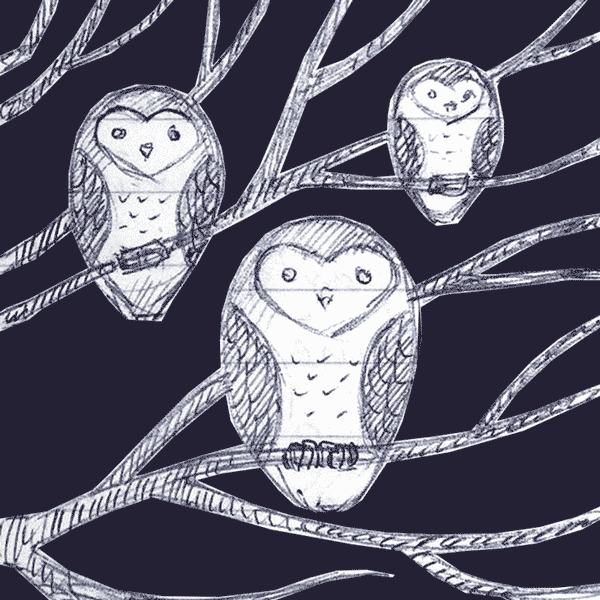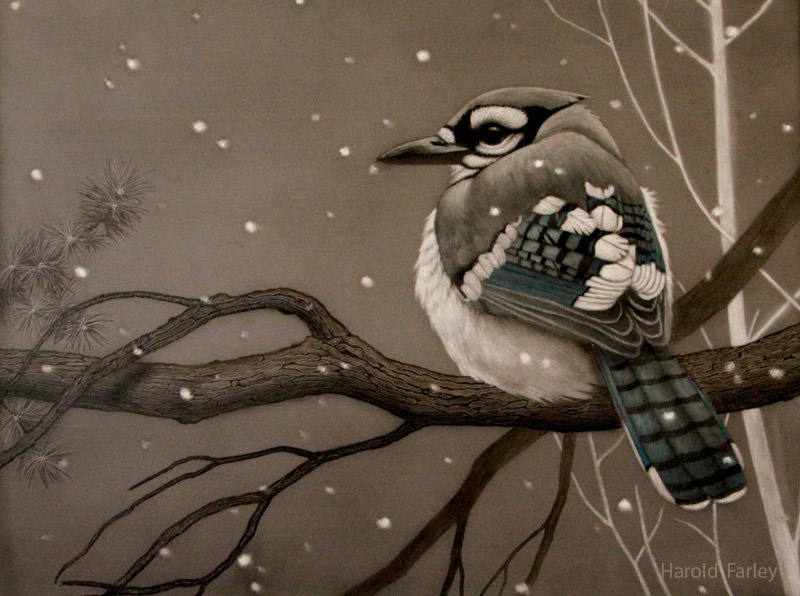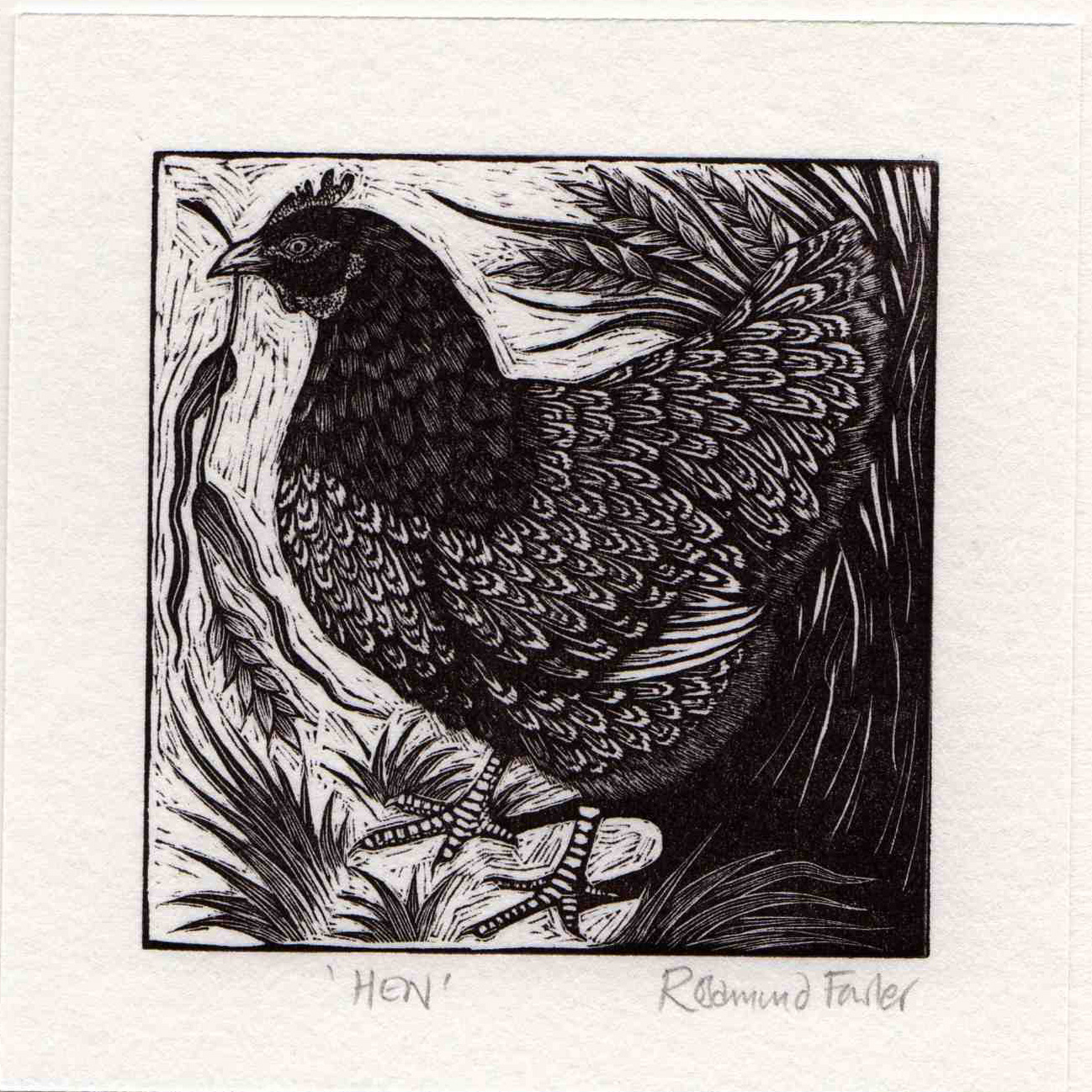My latest scratchboard is more illustrative than realistic.
For it I borrowed the basic design of an owl that my sister burned into a wooden spoon.
I wasn’t trying to achieve realism, but I wanted to include at least a hint of it. I started out by doing some sketches
And then I started refining:
Once I settled on the design, I transferred it to a 5×7 board with Chaco paper and red ballpoint pen:
For scratching I used a sharpened steel point that a friend made for me. It works great and has stayed sharp.
Initially the leaves were way too bright and competed with the owls for attention. I inked over them with a Faber Castell PITT artist pen brush, waited for them to dry, and re-scratched them. Even then they seemed too bright:
So, I pushed them back a little further with a diluted ink wash using Ampersand “black repair” that comes with their set of scratchbord inks:
The stars came last to give a background that wouldn’t compete with the owls. I’m feeling pretty good about the result. Now I’m trying to decide if I’m going to add some color.
























